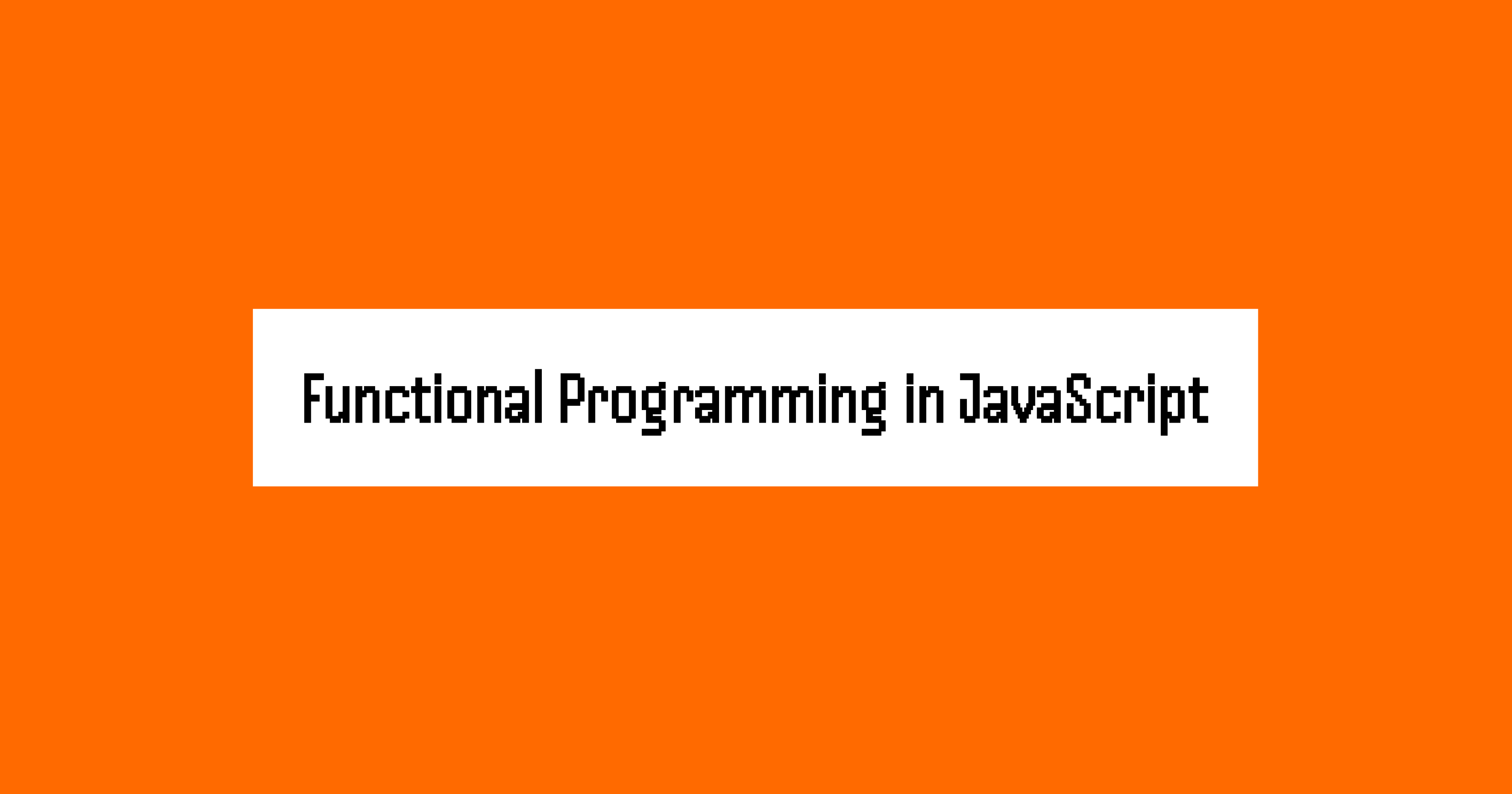
Patterns for organising code are called programming paradigms.
In this guide, we’ll explore the functional paradigm together, using just plain JavaScript and a few core ideas.
0. Programming Paradigms at a Glance
- Imperative: write the exact steps in order.
- Procedural: group those steps into reusable procedures.
- Object-Oriented: bundle data with the functions that work on that data.
- Functional: build results by calling pure functions.
- Event-Driven / Reactive: react when something happens (a click, a message).
- Declarative: describe the result you want and let the computer work out how (SQL, CSS).
Each style is good for some problems and not others.
In this guide we focus on the functional style and use only plain JavaScript and a few small ideas.
1. Functions Are Just Values
In school we learn that a function is something you call. In JavaScript it’s also something you can store.
const greet = (name) => `Hello, ${name}!`;
// We can put the function in a variable…
const sayHi = greet;
// …or pass it to another function.
const callTwice = (fn, value) => {
fn(value);
fn(value);
};
callTwice(console.log, "👋");We simply stored a function like any other value. Functions are data.
When you can pass functions around, you avoid repeating yourself and keep code clear.
2. Pure Functions: The Smallest Reliable Unit
A pure function is a function that, given the same input, always returns the same output and changes nothing else.
// pure
(a) => a * 2;
// impure - depends on external state
let factor = 2;
const multiply = (a) => a * factor;Pure functions never surprise you. They also combine well with other pure functions.
Side Effects
Not every function can be pure. Reading a file, fetching data, even console.log are all side effects. The trick is to push impurity to the edges of your program, the same way you keep mud outside the house.
3. Immutability: Changing Without Mutating
JavaScript lets you reassign and mutate with abandon. Functional style asks you to pause before you do.
// mutation
const user = { name: "Ada" };
user.name = "Charles"; // original object changed
// immutable update
const updated = { ...user, name: "Charles" };Immutability sounds fussy until you debug a race condition. Copies may cost a few bytes; mystery bugs cost weekends.
4. Higher-Order Functions
A function that takes a function or returns one is called higher-order. You’ve already met callTwice. JavaScript’s standard library is full of such helpers.
const numbers = [1, 2, 3];
const doubled = numbers.map((n) => n * 2); // [2, 4, 6]map receives your little doubling function and applies it to every element. No loops, no counters, no off-by-one errors.
Common Helpers
forEach: do something for every item (ignores return value).map: transform each item, return new array.filter: keep only items where the callback returnstrue.reduce: boil an array down to a single value.
Want to see these helpers broken down line by line? Head over to the Deep Dive into JavaScript Array Methods for build-your-own versions and more examples.
5. reduce: A Small But Powerful Tool
reduce looks intimidating, so let’s tame it.
const sum = [1, 2, 3, 4].reduce((total, n) => total + n, 0);
// 10Think of reduce as folding a list. The callback says how to fold one more item, and the initial value is where you start.
Need to count words?
const words = ["a", "lot", "of", "words"];
const lengths = words.reduce((acc, word) => {
acc[word] = word.length;
return acc;
}, {});
// { a:1, lot:3, of:2, words:5 }Examples in Action
const numbers = [1, 2, 3, 4, 5];
// Keep only odd numbers
const odds = numbers.filter((n) => n % 2 === 1);
console.log(odds); // [1, 3, 5]
// Find the first number over 3
const firstLarge = numbers.find((n) => n > 3);
console.log(firstLarge); // 4Build your own map
function myMap(array, fn) {
const result = [];
for (let i = 0; i < array.length; i++) {
result.push(fn(array[i], i));
}
return result;
}
console.log(myMap([1, 2, 3], (n) => n * 2)); // [2, 4, 6]Try writing myFilter and myReduce yourself.
Doing it once by hand makes the built-in helpers feel much less like magic.
6. Composition: Small Functions, Big Effects
If functions are Lego bricks, composition is snapping them together.
const trim = (s) => s.trim();
const toLower = (s) => s.toLowerCase();
const withoutSpaces = (s) => s.replace(/\s+/g, "-");
// manual composition
const slugify = (s) => withoutSpaces(toLower(trim(s)));
slugify(" Functional JavaScript "); // "functional-javascript"With a helper you can make composition declarative:
const compose =
(...fns) =>
(value) =>
fns.reduceRight((v, fn) => fn(v), value);
const slug = compose(withoutSpaces, toLower, trim);Now reading compose(a, b, c) mirrors the data flow: right-to-left, c then b then a.
Composition means calling one function after another so the output of one becomes the input of the next.
7. Real-World Mini Project
Imagine a to-do list coming from an API:
const raw = [
{ id: 1, title: "Buy milk", done: false },
{ id: 2, title: "Write blog", done: true },
];We want an HTML string of incomplete tasks.
const openItems = raw.filter((t) => !t.done);
const toLi = ({ title }) => `<li>${title}</li>`;
const html = openItems.map(toLi).reduce((all, li) => all + li, "");
console.log(`<ul>${html}</ul>`);No counters and no manual string joins. Just a clear pipeline.
8. Where to Go Next
Functional programming is a spectrum, not a switch. Start small:
- Write pure functions where you can.
- Reach for
map,filter,reducebeforefor. - Keep data immutable unless there’s a reason not to.
- Deepen your understanding of array helpers with the companion post Deep Dive into JavaScript Array Methods.